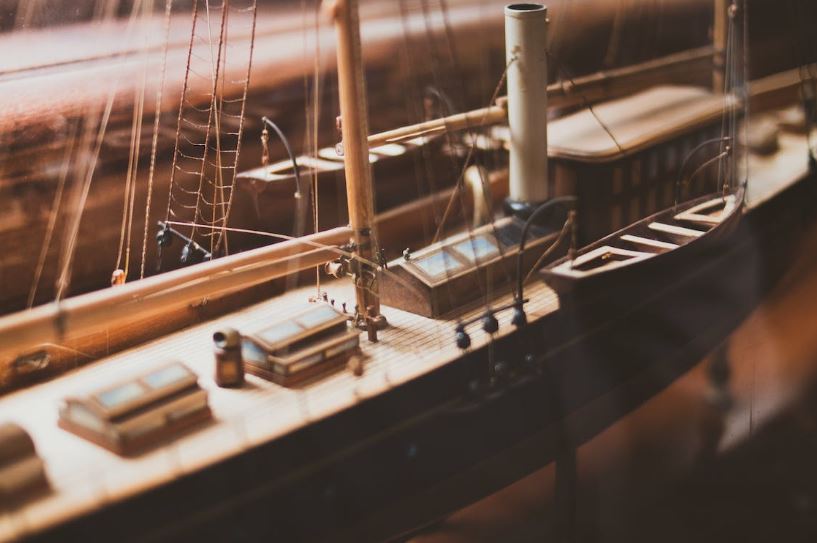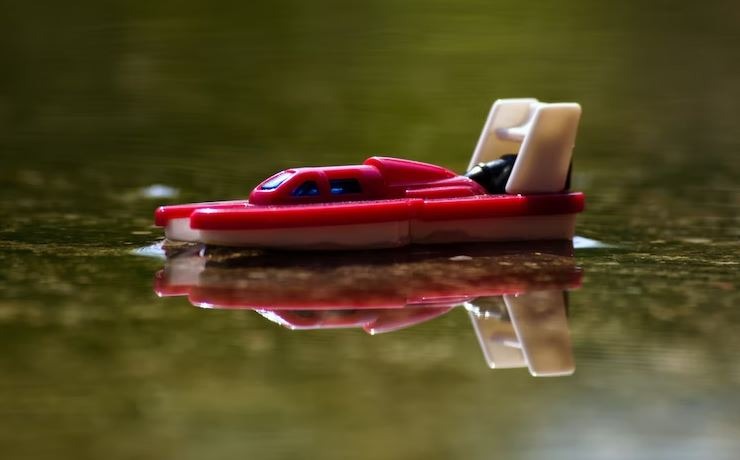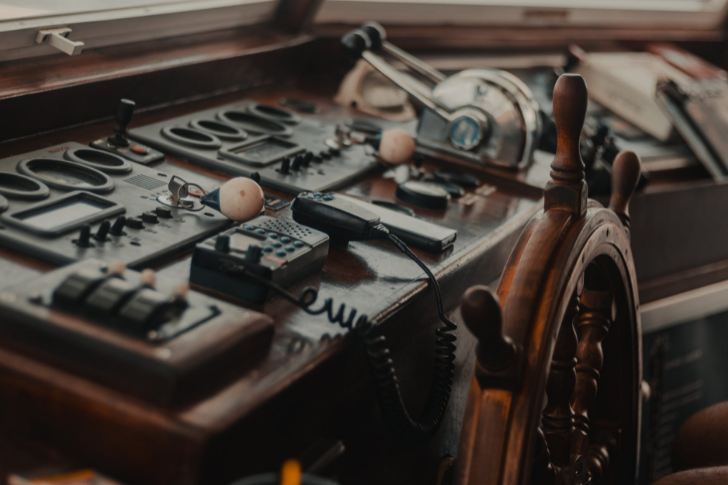Tips for Building an RC Boat From Scratch
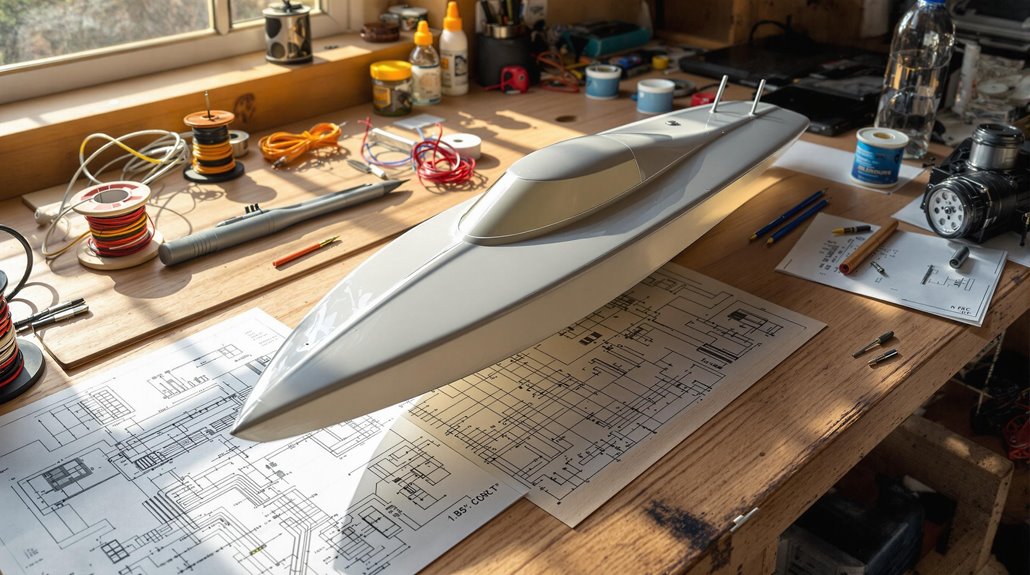
Building an RC boat from scratch is an exciting challenge. Start with a solid hull, using 3 and 5 mm plywood for precision cuts. Assemble strong joints and include bilge keels for stability. Focus on the cockpit design for easy access to the motor and battery. Waterproof your structure with polyester resin to ensure durability. Use reliable electronics like a 15kg servo for steering and a suitable brushless ESC. Don't forget to choose the right battery for performance. With these essential tips in hand, you're set for success and will discover even more valuable insights ahead.
Key Takeaways
- Start with precise measurements and accurate cuts of 3 and 5 mm plywood for the hull to ensure a sturdy foundation.
- Use strong glued joints and bilge keels during assembly to enhance the stability of the hull bottom.
- Waterproof the boat using polyester resin and seal sensitive electronics with silicone sealant or heat shrink tubing to prevent water damage.
- Choose a compatible motor and battery that match the boat's power requirements for optimal performance and longer runtime.
- Join online communities and local RC clubs for support, knowledge sharing, and to enhance your building skills.
Overview of RC Boat Construction
Building an RC boat from scratch can be an exciting and rewarding project for DIY enthusiasts. To get started, you'll focus on constructing the hull bottom, which serves as the foundation for your boat. Using accessible plans in .dwg or .pdf formats, you'll cut panels from 3 and 5 mm plywood, ensuring precision for a well-fitted assembly.
As you piece the hull together, pay close attention to creating strong glued joints. You might even consider incorporating bilge keels for added stability in the water. Once the hull is assembled, waterproofing is crucial. Applying polyester resin will protect your boat from water ingress, enhancing its durability and longevity.
After waterproofing, you'll move on to the final assembly stage, which includes installing the motor and rudder. These components are vital for controlling your RC boat's maneuverability. Don't forget to paint and apply decals, as they not only add aesthetic appeal but also provide additional protection from environmental factors. With careful planning and execution, building an RC boat from scratch can lead to a functional and visually stunning model that you can proudly showcase.
Materials and Tools Required
After assembling the hull and ensuring it's waterproof, gathering the right materials and tools is vital for the next steps in building your RC boat. Start with 3 and 5 mm plywood panels, as they strike a perfect balance between durability and weight. These will form the core structure of your boat.
For tools, you'll need a coping saw to cut the plywood into the desired shapes. Sandpaper comes in handy for smoothing all the edges to prevent any splinters. A cutter is essential for making precise adjustments to your materials as you go along.
Now, let's talk electronics. A 15kg servo is necessary for steering, while a brushless ESC (Electronic Speed Controller) will manage the motor control. Choose a motor that fits well with your boat's design for optimal performance.
Don't forget about finishing touches! You'll want paint supplies like red, black, and white paint, along with decal sheets to decorate your boat. Lastly, polyester resin and white glue are crucial materials for waterproofing and securing the boat's structure during assembly. With these materials and tools, you're well on your way to building your RC boat! When choosing a motor, consider whether you want a brushless motor for its superior speed and durability compared to a brushed motor.
Construction Steps
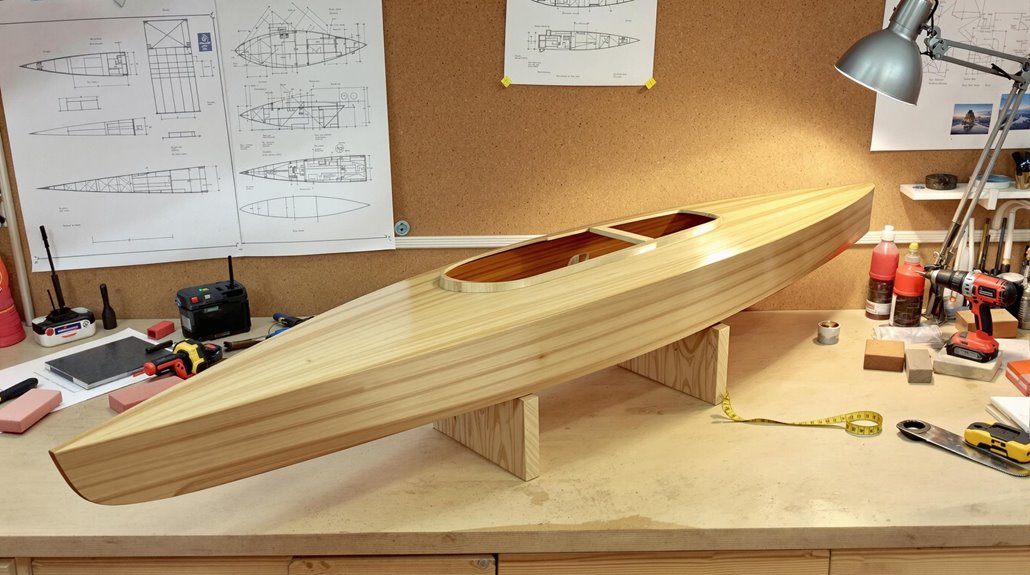
To kick off the construction of your RC boat, start by cutting the plywood panels according to the resized plans, ensuring all dimensions are accurate for a snug fit during assembly. Begin with the hull bottom; make strong glued joints and attach bilge keels for added stability and performance on the water. RC buggies, similar to RC boats, often have full suspension systems that enhance stability on rough terrain, highlighting the importance of structural integrity in RC vehicles.
Next, construct the hull sides, but remember to leave extra length for the rudder, which is essential for effective steering. This extra length will ensure your boat can maneuver easily and accurately.
For the cockpit, design it with precise dimensions to accommodate the motor and battery. This step is crucial for easy access and proper balance during operation; an unbalanced boat can affect performance and handling.
After assembling the main components, it's time to waterproof the entire structure. Use polyester resin, as it enhances durability and prevents water ingress during use. This final step in the construction process will ensure your RC boat can withstand the elements and provide you with hours of fun on the water. Follow these construction steps, and you'll be well on your way to enjoying your new RC boat!
Final Assembly and Decoration
The final assembly of your RC boat is an exciting stage where all your hard work comes together. Start by securely installing the motor and rudder. Use screws and ties to ensure these essential components are firmly attached. Next, create sturdy cockpit brackets to provide stability during operation and prevent any movement of the electronics.
Once everything's in place, it's time to give your hull a fresh look. Apply a base coat of paint in vibrant colors that enhance visibility and aesthetics. After the paint dries, add a layer of varnish for extra protection against wear and tear. Don't forget to personalize your boat with decorative elements like decals or custom graphics; it'll make your RC boat truly stand out.
Finally, complete the assembly by installing the battery and electronic speed controller (ESC). Double-check all connections for security and readiness before you move on to testing your creation. This final phase not only showcases your craftsmanship but also sets the stage for the thrilling adventures that lie ahead on the water. Enjoy the satisfaction of seeing your RC boat come to life!
Tips for Enhanced Performance
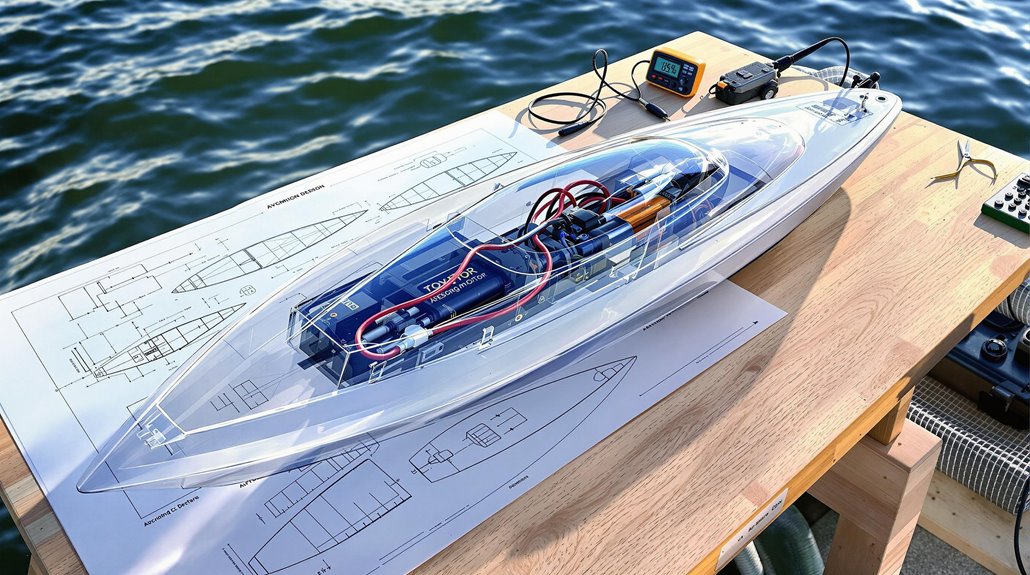
Enhancing your RC boat's performance can significantly elevate your on-water experience. To start, consider incorporating a rubber bellow around the servo. This simple addition effectively prevents water ingress, protecting your electronic components and extending their lifespan. Also, seal the motor axis with lithium grease to maintain hull integrity and keep water out, ensuring the motor functions optimally.
Pay attention to your boat's air intakes. Design them carefully so they provide adequate ventilation without compromising watertight integrity. This balance is crucial for performance and stability.
When you're ready to test your boat, conduct initial tests in calm waters. This allows you to assess performance and stability before tackling more challenging conditions. Use these tests to make necessary adjustments, ensuring your boat operates at its best.
Finally, invest in a waterproof stand for storage. This will protect your RC boat from moisture damage and keep it in optimal condition when it's not in use. Implementing these tips will enhance not just your boat's performance but also your overall enjoyment on the water.
Electronics and Wiring
When building your RC boat, getting the electronics and wiring right is crucial for optimal performance. First, ensure your ESC (Electronic Speed Controller) is compatible with your motor and supports reverse functionality. This feature is essential for maneuverability. Next, connect the BEC (Battery Eliminator Circuit) within the ESC to power your Arduino or receiver, simplifying your wiring setup and eliminating the need for a separate battery for the receiver.
When it comes to wiring, use heat shrink tubing on all exposed wire connections. This will prevent short circuits and enhance the waterproofing of your electronics. For optimal signal transmission, position the NRF24L01 module where it's least obstructed and away from other components that might cause interference.
Before you finalize your assembly, test all electronic connections to ensure proper functionality. This step is key to identifying any issues that might arise during operation. By taking the time to carefully plan and execute your wiring and electronic connections, you'll set your RC boat up for success and ensure a smooth sailing experience.
Testing and Troubleshooting
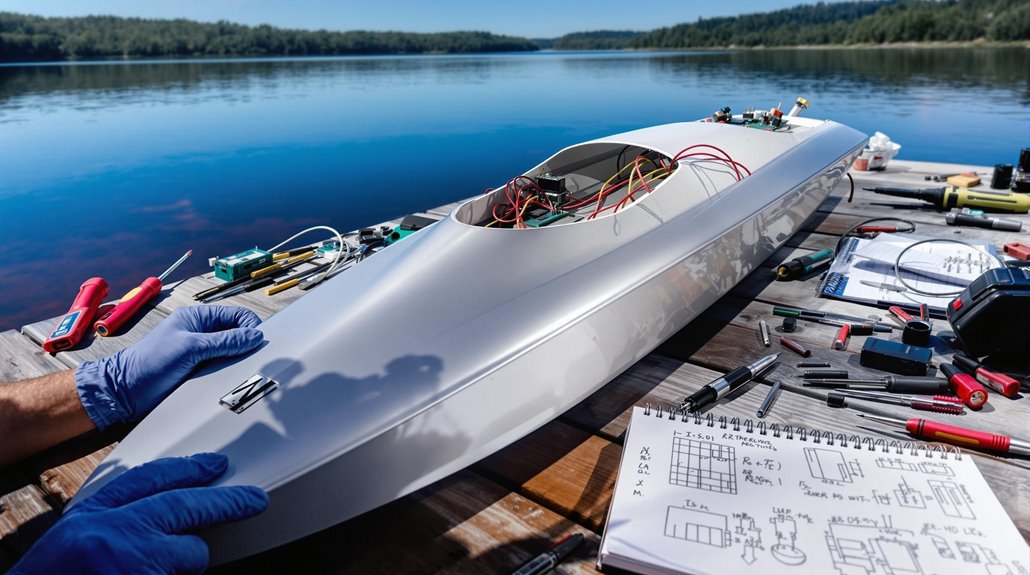
Testing your RC boat before taking it into larger bodies of water is essential for ensuring it performs as expected. Start by conducting initial water tests in a controlled environment. This lets you monitor the boat's performance and handling without the risk of losing it in deep water. Use a checklist to confirm that all electronic components, like the motor, receiver, and battery, are securely connected and waterproofed.
This prevents malfunctions due to water ingress. Selecting the correct battery type for your RC boat ensures optimal performance and longer runtime. While testing, keep an eye out for signs of water entering the hull. If you notice any leaks, apply silicone sealant or heat shrink tubing to protect sensitive electronics. If you encounter issues like loss of signal or erratic movement, troubleshooting is your next step.
Check the battery charge, ensure all connections are tight, and adjust the antenna position if needed. Finally, document any performance issues and their resolutions. This not only helps you understand what went wrong but also informs future builds and modifications, enhancing your overall design and functionality. With proper testing and troubleshooting, you'll enjoy a more reliable and satisfying RC boating experience.
Community Engagement and Resources
Getting involved in the vibrant community of RC boating enthusiasts can significantly enrich your building experience. By engaging with online forums and social media groups, you'll gain access to invaluable insights, tips, and troubleshooting advice from seasoned builders. These platforms are treasure troves of resources where you can find downloadable plans and design files, giving you a solid foundation for your project without starting from scratch.
Don't overlook the value of local RC clubs. Participating in these clubs or attending events lets you network with fellow hobbyists, share experiences, and receive constructive feedback on your designs. You'll also benefit from hands-on experience, which can be instrumental in honing your skills.
Moreover, many builders share their project logs and tutorials on platforms like YouTube and personal blogs. These step-by-step guides offer inspiration and can help you navigate challenges during your build. Engaging in collaborative projects or workshops can further enhance your skills, deepening your understanding of both construction and electronic integration in RC boats.
Embrace community engagement; it'll elevate your RC boating journey and ignite your passion for building. Additionally, consider exploring the environmental benefits of using sustainable materials, like wood, when possible in your RC boat projects.

